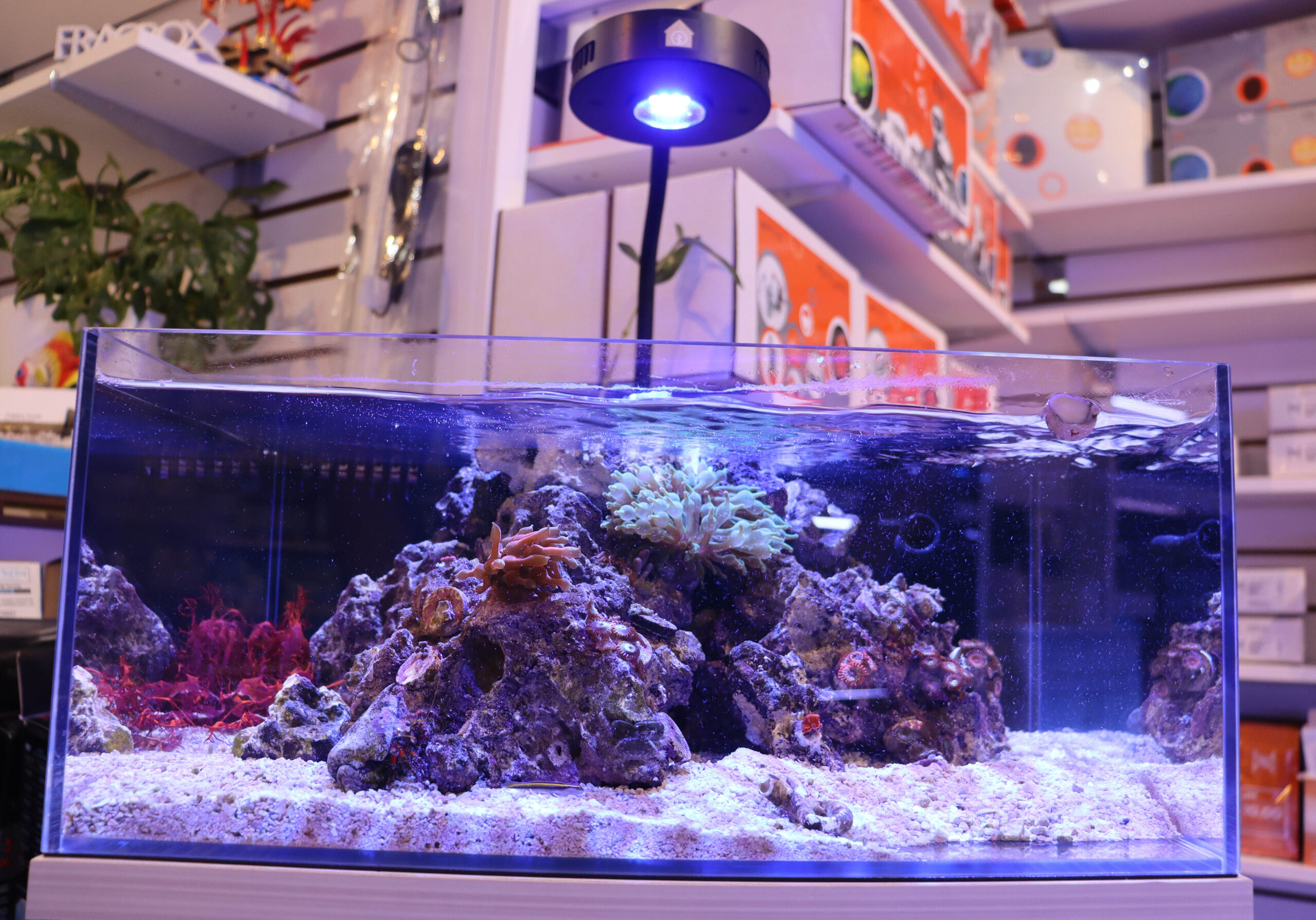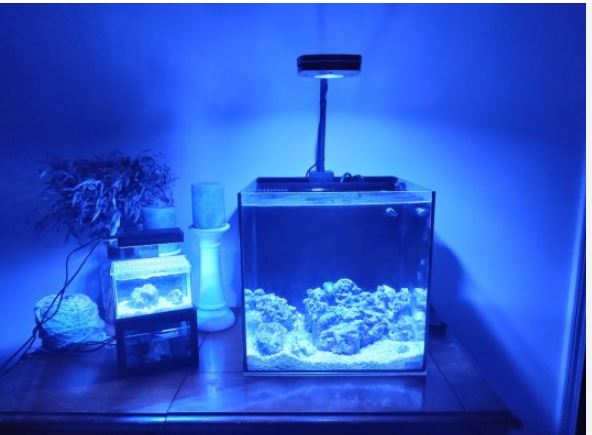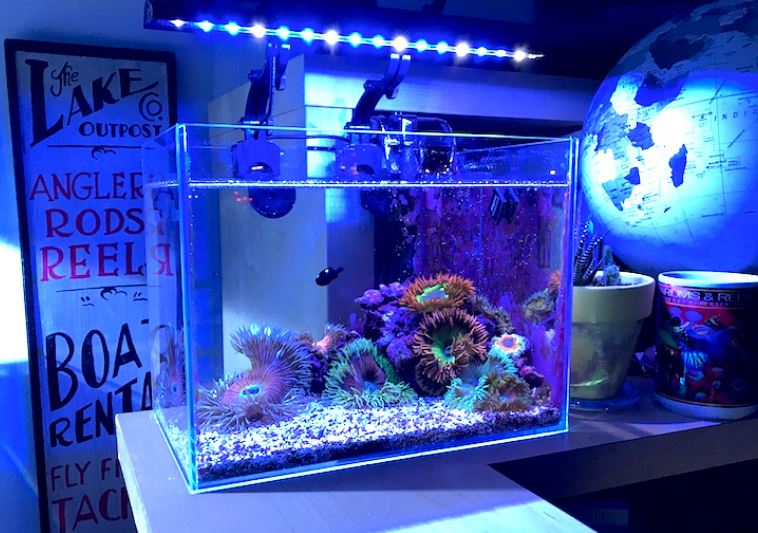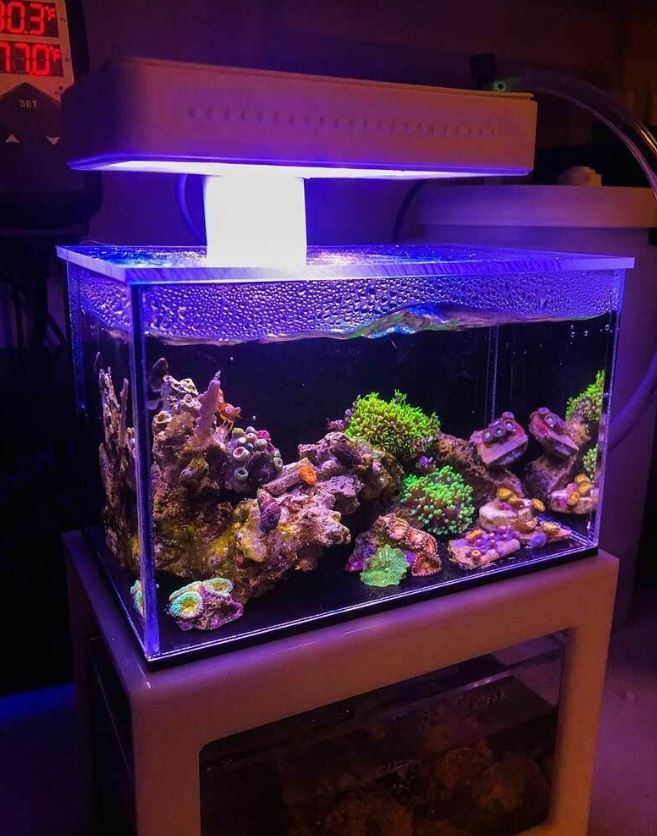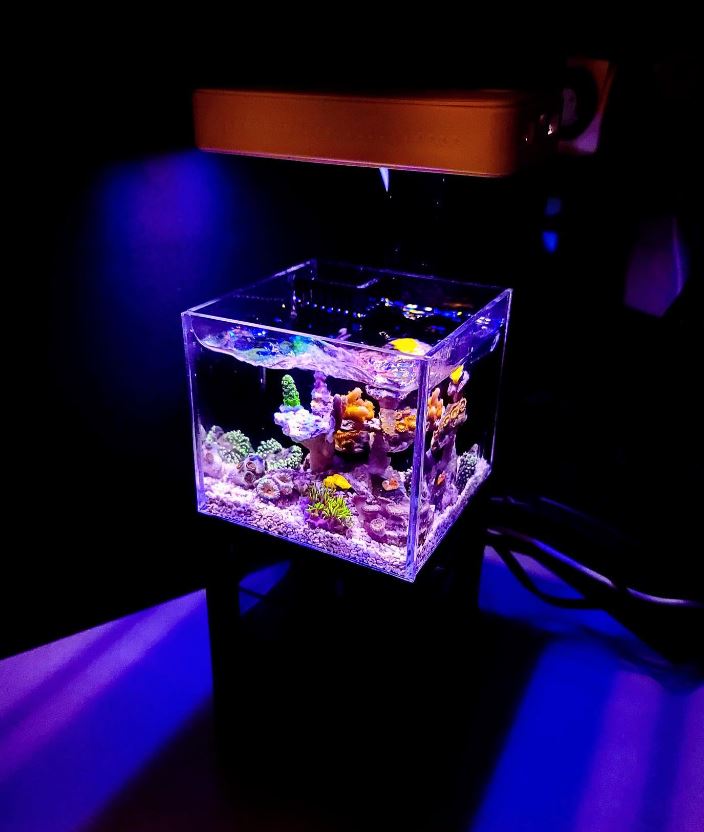Micro vs Pico Reef Tanks: Which is better ?
Types of Small Reef Tanks
As reefing becomes more popular and hobbyists want to set up tanks in places such as offices and kitchens, reef tanks have been getting smaller and smaller. While there are no official classifications, small reef tanks are generally divided into Nano (8-25 gallons), Pico (4-8 gallons) and Micro (under 3 gallons). In this article we will discuss the difference between Pico and Micro reef tanks and why we believe that a Pico tank is far and away the better choice for a long term tank.
What is a Pico Reef Tank?
A Pico tank is generally considered to be a reef tank between 4 and 8 gallons, although this definition can vary. At its heart, a Pico tank is a fully functioning reef tank with all the required components for long term success. For example, the Reef Casa Flat 6 Pico Tank has all of the same functionality as our larger tanks, just in a smaller size. This includes a place for filter media such as floss and carbon, a large rear chamber and a dedicated return pump chamber. We even offer a smaller version of our House Keeper media organizer for this small tank. Simply put, a Pico tank allows reefers to set up a small piece of the ocean in virtually any room. Maintenance for a Pico tank is very similar to that of larger tanks, just on a smaller scale. This generally means regular water changes, changing of the filter media and removing algae from the glass. In terms of stocking, there are many small fish that can be housed in a pico tank, such as various gobies. Because of their small size, they are ideal homes for interesting invertebrates, such as porcelain crabs, since these small creatures are often hard to spot in larger tanks. Since Pico tanks can be equipped with a wide variety of lighting it is possible to grow almost any type of coral in them with proper attention to tank water parameters.
What is a Micro Tank?
A Micro tank takes miniaturization to the extreme and usually any tank less than 3 gallons is considered micro. Unlike a Pico tank, a Micro tank does not usually have space for all the equipment necessary to run a fully functioning reef tank. While they will have a small return pump of some sort, they generally do not have rear filtration chambers and may not even have space for filter media. While it may seem logical that Micro tanks would be the easiest to maintain because of their small size, this is often not the case. For example, it can become very hard to clean algae off the glass due to how difficult it can be to use an algae scraper in such a small tank. It can also be almost impossible to prevent the buildup of sludge on the sandbed long term as well due to a lack of proper water flow in the tank. The choices for stocking a Micro tank are also very limited and are largely restricted to micro gobies and soft corals.
Which is the Better Long Term Choice?
While a Micro tank can make for an interesting project tank or as a conversation piece, they are very difficult to impossible to keep healthy long term. Over time it can become very hard to keep the tank clean and the health of the fish and corals is likely to suffer. That isn’t to say that Micro tanks don’t have a place as a project tank for an experienced reefer, but they are not long term tanks and certainly should not be attempted by novice reefers. On the other hand, Pico tanks can make a great long term tank if they are maintained properly. While all smaller tanks do require a more consistent water change routine than a larger tank, the weekly water change in a Pico tank can be as simple as removing a gallon of water with a milk jug and replacing it with a gallon of fresh salt water. A magnetic scraper such as the Flipper Nano Float makes cleaning the glass a breeze. As long as the fish and corals for a Pico tank are carefully chosen these small tanks can offer years of reefing enjoyment in virtually any room.


